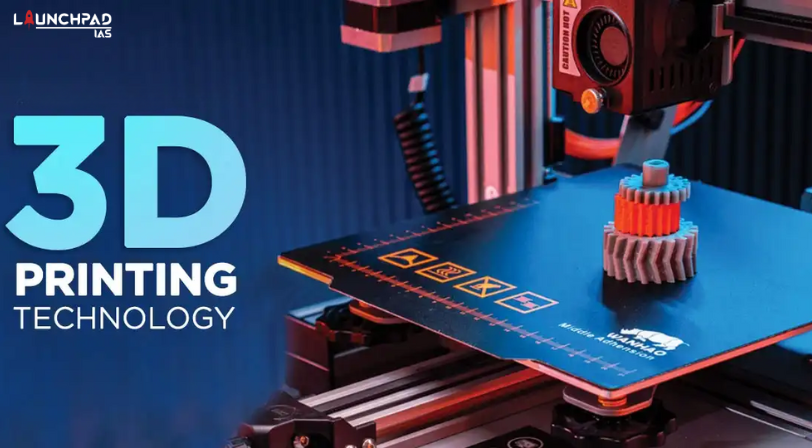About
- Three-dimensional 3D Printing Technology is an additive manufacturing process in which a physical object is created from a digital design by printing thin layers of material and then fusing them.
- 3D printing technology is a fast-emerging technology.
Applications
- 3D Printing Technology is widely used in the world. It is increasingly used for the mass customization, and production of any type of open-source designs in the fields of agriculture, healthcare, the automotive industry, the locomotive industry, and aviation industries.
- It can print an object layer-by-layer deposition of material directly from a computer-aided design (CAD) model.
- It is available for various segments, such as affordable housing up to G+3 floor, military barracks, single-floor schools, warehousing, accommodation, and villas.
Advantages of 3D Printing Technology
- Ease of Access: 3D printers are becoming more and more accessible with more local service providers offering outsourcing services for manufacturing work
- Advanced Healthcare: It is being used in the medical sector to help save lives by printing organs for the human body such as livers, kidneys, and hearts. Further advances and uses are being developed in the healthcare sector providing some of the biggest advances in using the technology.
- Environmentally Friendly: As this technology reduces the amount of material wastage used this process is inherently environmentally friendly.
- Cost Effective: Customise desired products in a short time and therefore costs associated with using different machines for the manufacture
- Rapid Prototyping: It can manufacture parts within hours, which speeds up the prototyping process.
- Fast Design and Production
- Strong and Lightweight Parts
- Create complex objects and shapes that otherwise might be impossible to create through any conventional method.
Disadvantages of 3D Printing Technology
- Design Inaccuracies: A potential problem with 3D printing is directly related to the type of machine or process used, with some printers having lower tolerances, meaning that final parts may differ from the original design.
- Copyright Issues: As 3D printing is becoming more popular and accessible there is a greater possibility for people to create fake and counterfeit products and it will almost be impossible to tell the difference. This has evident issues around copyright as well as quality control.
- Reduction in Manufacturing Jobs: Another of the disadvantages of 3D technology is the potential reduction in human labour, since most of the production is automated and done by printers. However, many third-world countries rely on low-skill jobs to keep their economies running, and this technology could put these manufacturing jobs at risk by cutting out the need for production abroad.
- Restricted Build Size: 3D printers currently have small print chambers that restrict the size of parts that can be printed. Anything bigger will need to be printed in separate parts and joined together after production. This can increase costs and time for larger parts due to the printer needing to print more parts before manual labour is used to join the parts together.
- Limited Materials: 3D Printing can create items in a selection of plastics and metals the available selection of raw materials is not exhaustive
Way Ahead
- 3D Printing has immense potential to revolutionize India’s manufacturing and industrial production landscape through digital processes, communication, imaging, architecture, and engineering.
- Therefore, It has been suggested that to get ahead in the additive manufacturing or 3D printing space, India must adopt it in all sectors, including in defence and public sectors.
- An apex body that has subject matter experts and leaders from local and global industries could be established to lead the mission


